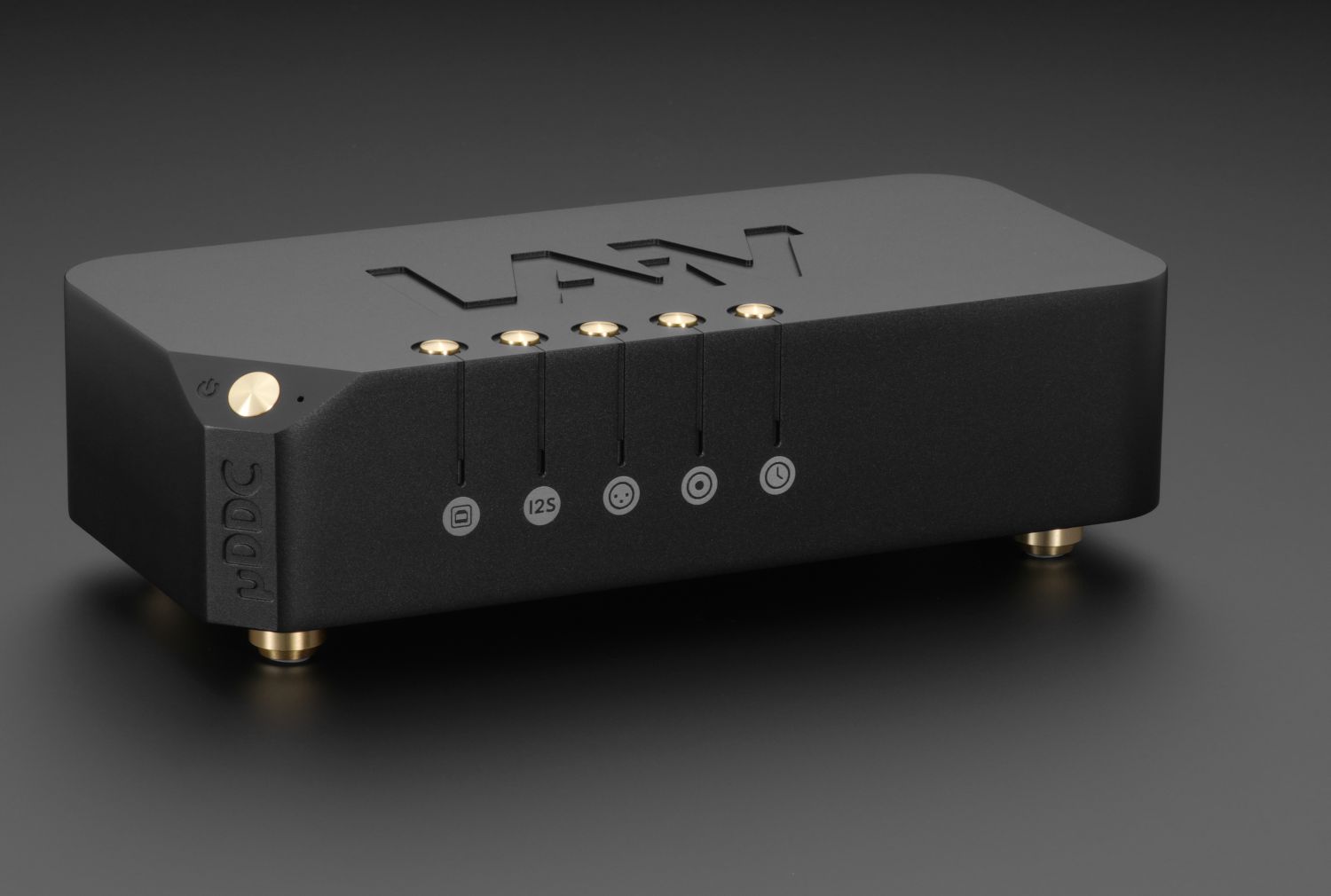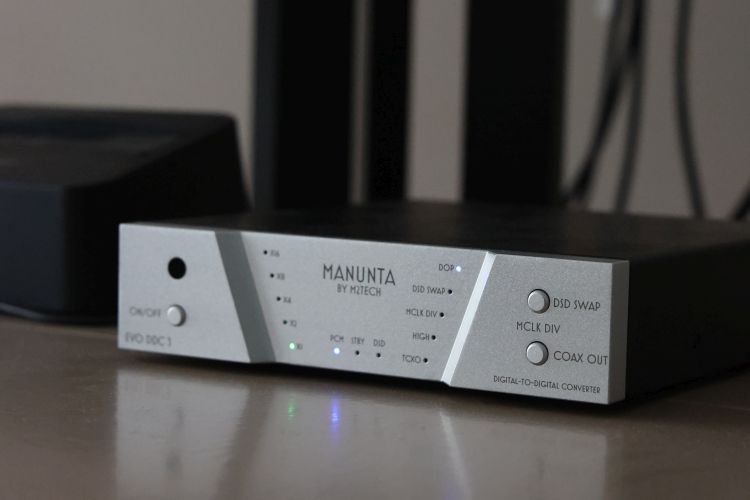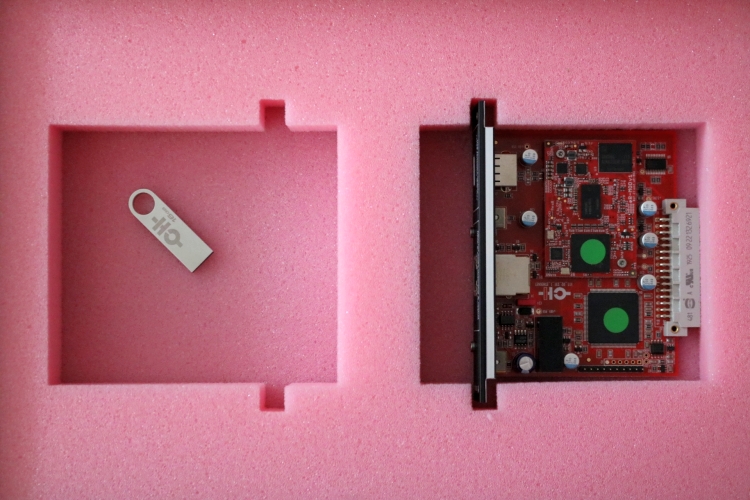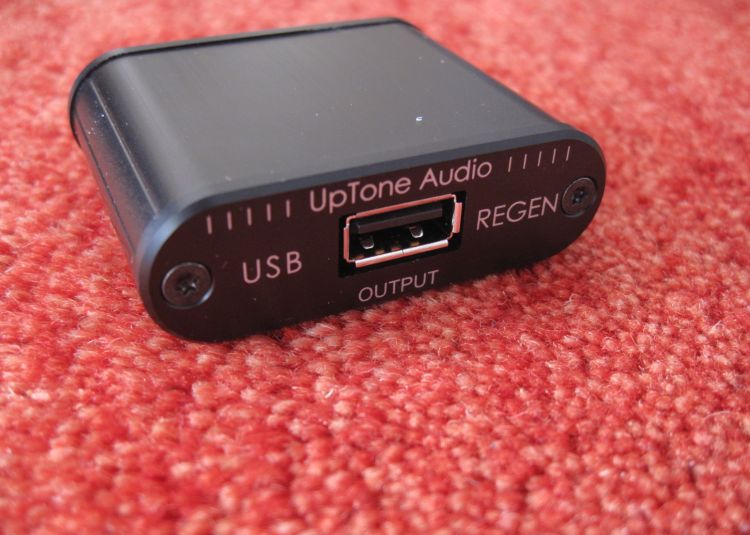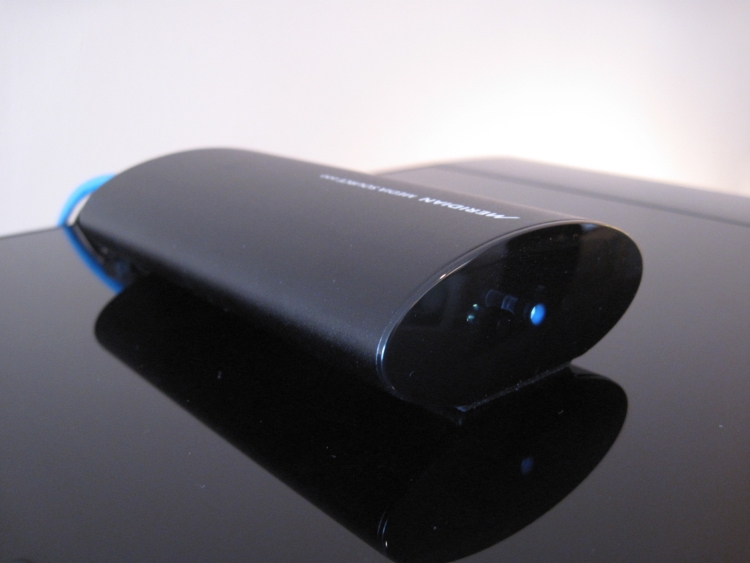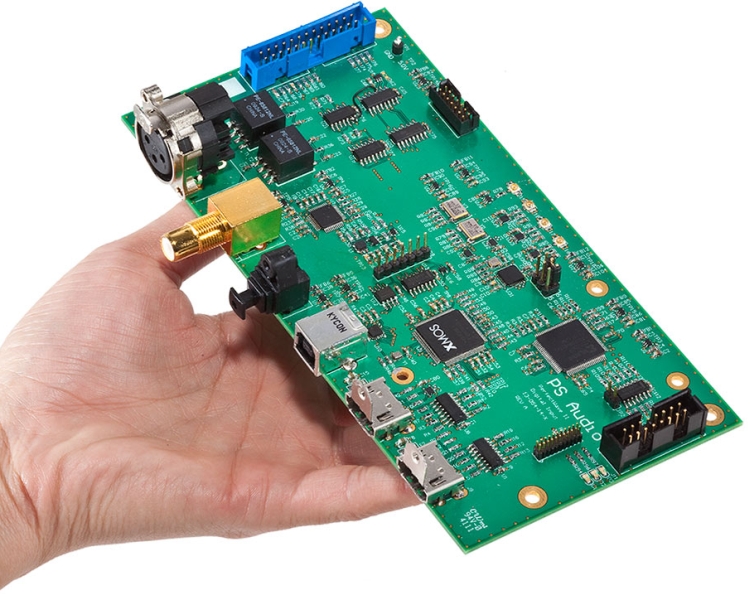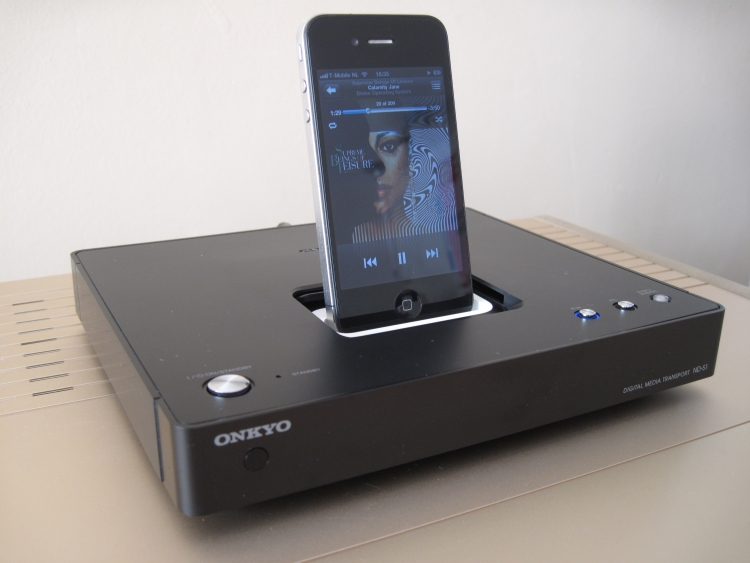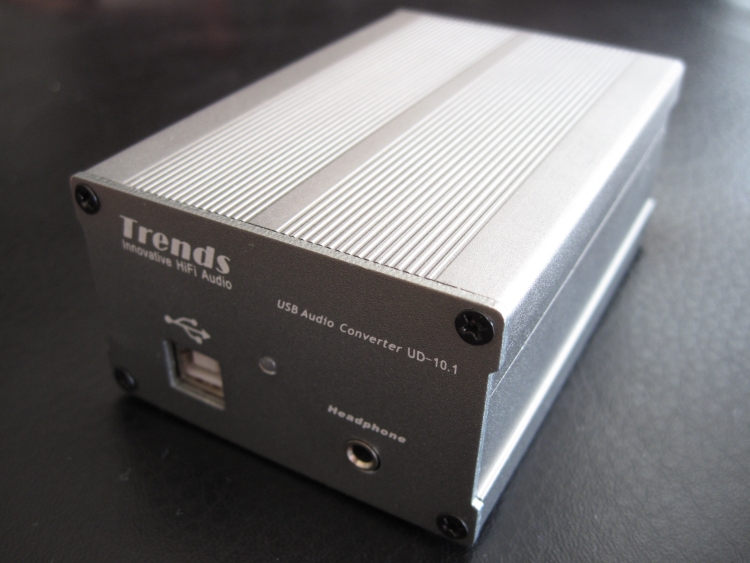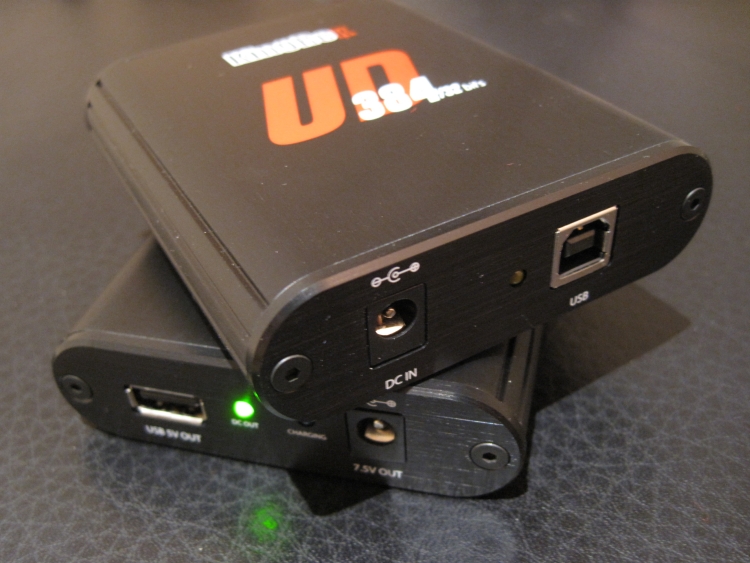
USB computer audio interface that supports sample rates up to 384khz in asynchronous mode
Review sample kindly supplied directly by manufacturer KingRex
Retail price UD384 approx 399 euro
Retail price U Power approx 199 euro
Introduction
After the UC192 that I reviewed about a year ago, KingRex have issued a new model that not only supports sample rates up to 384khz in asynchronous mode, but also offers the option to work without ASIO. To top it off, KingRex also supplied a nicely finished and comfortingly heavy battery unit called U Power.
Christine Wu from Taiwan electronics producer KingRex wondered if I was interested in reviewing their new UD384 computer audio USB interface. Of course I was! Just like the previous time, after only a couple of days, the package was delivered to my door!
In the package was not only the UD384 itself, but also a very nicely finished Li-Ion battery power supply. Regular readers probably know that I like battery power supplies: both my pre- and poweramps have them! I’m not saying that it will always be the better solution for everyone, but make no mistake: even with devices like USB interfaces, the audible effect is there for everyone to hear.
The UD384, like its predecessor UC192, is compatible with both PC and Mac. I’ll start with the Windows experience, the Mac story is at the bottom.
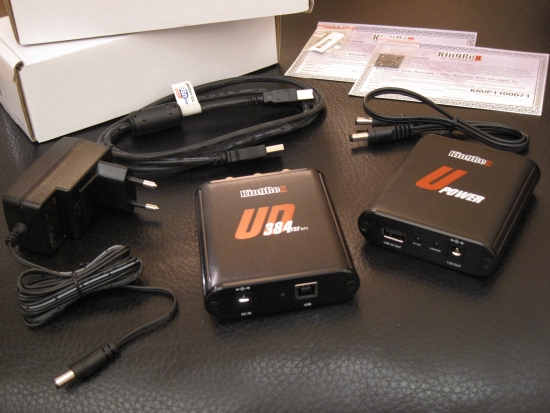
Installation
Using the supplied super-thin USB stick, the driver installation did not go entirely flawlessly, but it turned out that this is most likely to do with my USB 3 PCI card because the subsequent installation on other Windows XP machines went flawlessly. Sadly I cannot use the onboard USB ports on my computer because they are defective due to a short circuit in my mains system some time ago. That’s why I bought a new USB card.
Most likely due to this, I experienced some installation troubles as well as some drop outs and mini-skips in the music, as if the buffer size wasn’t large enough, despite the sliders for all buffers were on maximum. The same problems persisted with playback through Foobar 2000 and ASIO4ALL*. Despite this, I could clearly hear the differences between the UC192, UD384 and the HiFace EVO because when it played, it played nicely. Still, my USB 3 card works just like a charm with other interfaces such as my resident HiFace EVO. So, a bit weird, that.
Later I received updated drivers and firmware, which fixed the problems for me. Following my reports and statistics from my computer, Christine and her team had worked hard at providing a driver that worked better with the shorter interrups of my USB3 card. Well done, Christine!
The older UC192 couldn’t be used with Winamp 5. Imagine my surprise then with the new UD384, when playback just started after firing up Winamp 5. I hadn’t even selected the apropriate output in WaveOut yet, nor did I setup ASIO drivers (which I couldn’t get working with Winamp at all). This is great news, because the UD384’s predecessor, the UC192, forced one to use ASIO4ALL. Foobar 2000 isn’t one of my favourite programs because while it may be bit-perfect, it also tends to lay bare how dry and clinical a computer source can be. But it produced excellent results with the UC192 in ASIO mode: it just sounded utterly free-flowing and magically fluid. And there weren’t any problems with playback, but that was with a different USB PCI card. Still, despite the occasional hickup, listening to the UD384 was easy and its sound quality was obvious from the get go and as mentioned above, at a later stage I received new software that cured the problems.
Incidentally, installation on a friend’s Windows XP machine went without hickups and we didn’t ever hear any dropouts or mini-skips. Also, the sound quality differences between the HiFace EVO and the UD384 were consistent with my own experiences.
* lateron, after switching back and forth between ASIO and DS mode, Foobar 2000 would play perfectly with ASIO4ALL, as described below.
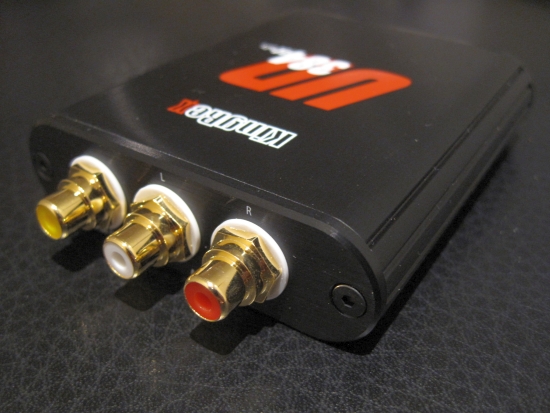
Analog Outputs
Naturally I tried the analog outputs and I have to say that I wasn’t expecting much, but I was pleasantly surprised to find that while they don’t do anything spectacularly so, they sound pretty good. Imaging isn’t very wide nor deep, nor is the bass very powerful but I’d say the output is at least on par with entry level cd players such as the Marantz CD4000 I listened to for comparison. So, if you have a quality DAC – don’t throw it out just yet. But if you only have your computer’s minijack output then you could do a whole lot worse than to use the UD384’s analog outputs.
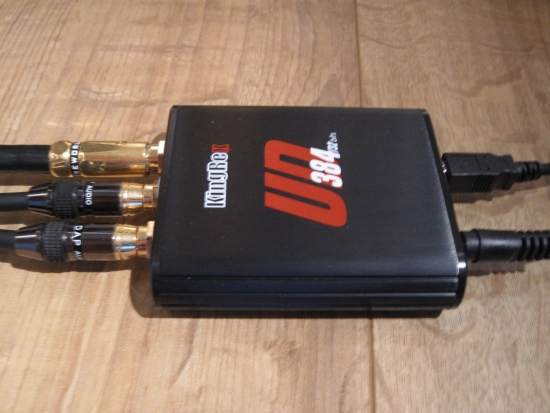
Sound Quality using Winamp
The older UC192 sound may not be for everyone but the UD384 is a different animal. With Winamp, using WaveOut direct device select, the new UD384 sounds confident, upbeat and very lively. It is very dynamic, but not in a shouty, agressive manner. Also, its treble is more open than that of the HiFace EVO, which made me reasses my preferences upon returning to the latter. But the EVO has fuller, more powerful bass. The UD384 on the other hand is so nicely enthusiastic, sounding in no way like the UC192 does. With Winamp 5, there are several ways of getting sound out, like DirectSound. DirectSound always sounds less musical to me. More dry, a bit narrow, less fluid and less involving. This was confirmed in a friend’s setup with Martin Logan speakers: we clearly favoured the WaveOut mode, selecting the KingRex directly for its more fluid and fuller, more musical delivery.
Sound Quality using Foobar 2000
Going to Foobar 2000 in ASIO mode, which worked so well with the UC192 (please refer to the UC192 review for more details) revealed that this player still works very well with the new UD384. The interesting part is that just like in Winamp, with the UD384 you can now also select Direct Sound and this in turn revealed that Foobar’s inherent thinness and lack of colour is only present when used like that and this disappears once you use ASIO4ALL. Used that way, Foobar 2000 sounds a lot like Winamp 5, but a little livelier, Winamp 5 being a little smoother, but not superior anymore. What’s more: used with ASIO4ALL, and after some fiddling with the settings, the miniskips I was experiencing with Winamp 5 as well as with Foobar 2000 in DS mode, had vanished! Was it me? I had to re-check. Switching back to DS mode brought back the miniskips, and all was fine again after switching back to ASIO mode. Going back to Winamp 5 there were also skips again. So, while I cannot be sure whether my computer is playing up, my USB 3 card is somewhat incompatible, or I am just going crazy, but Foobar 2000, as long as it is used with ASIO4ALL, not only works flawlessly and reliably, but also provides excellent sound quality. As noted above, after installation of the new drivers, the UD384 now worked well any which way I chose to use it.
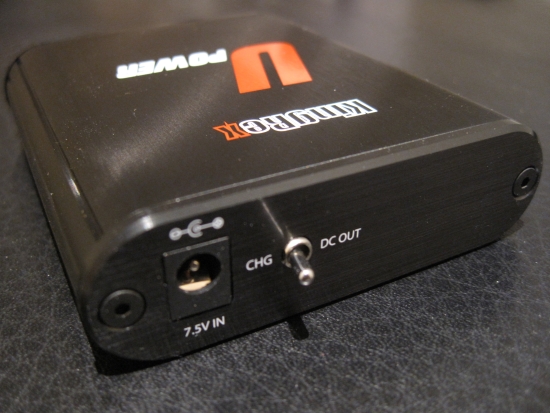
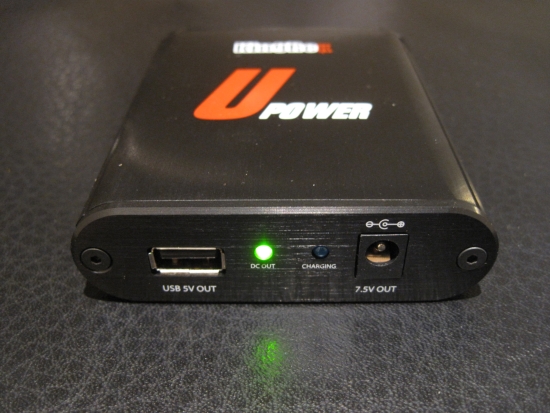
Enter the U Power Battery Power Supply
Adding the Battery Power Supply makes for a gentle rounding of transients and more freedom from electronic signature. For the PC, in combination with Winamp 5 and Foobar 2000, the difference is clear but whether or not you will find it better is a matter of taste and I can imagine some people preferring the more dynamic (albeit slightly drier) presentation with the UD384 being wall-wart powered. I tend to prefer the battery mode however. On the Macbook the outcome is much more clearly cut and my preference for battery powered operation was formed rightaway.
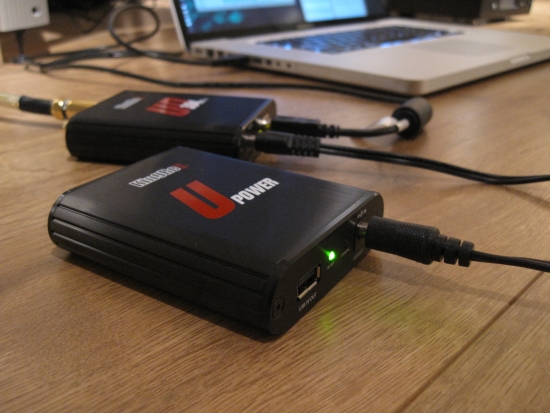
Apple Mac
The UD384 worked immediately after connection, without the need to install drivers. Because the Macbook already sounds very tight and fast and at times can be just too analytical, I quite liked its sound with the UD384 being fed from the battery power supply from the get go and had no craving to remove the battery power supply. In these circumstances, there is no feeling of rounding, or lack of speed or dynamics. On the Macbook too, the UD384 sounded more muscular, more live and more communicative, even if it didn’t have the UC192’s utter free-flowing soundfield presentation. Rather unlike with the UC192 though, I really liked the sound of iTunes being enhanced with Pure Music. Now I could really see myself using it fulltime, if the Macbook was my main source of music. iTunes with Pure Music, combined with the UD384 and Battery Power Supply, just sounded very fine. I enjoyed every track I played and just couldn’t fault it, even though I knew that the same music would sound fuller when played from the tower PC. Of course, I did try the Macbook with the UD384, powered by the wall-wart but this made for an altogether too tight presentation that lacked the refinement and subtle fluidity that battery powered operation offered.
Compared to M2Tech HiFace EVO
The EVO has bigger bass and more colour and substance in the nether regions, but overall, I have to admit to preferring the UD384 in combination with the Macbook. The Macbook has really open and airy highs, and the UD384 seems to enhance this aspect even further. And with the help of its battery power supply it manages to sound just as nuanced and fluid as the EVO, perhaps even more so, but in the wrong setup, the UD384 can become a little overly bright. Again, never in a shouty or ragged manner, but a just little forward in the higher midrange and lower treble. The EVO by contrast tends to dim the highs down a bit, and by comparison shelves the midrange down to more civilised levels.
Battery Power Supply is compatible with EVO
I was happy to find out that the KingRex’s Battery Power Supply is compatible with the M2Tech HiFace EVO as well. But even when the EVO is used with the KingRex battery power supply, it doesn’t sound quite as refined and delicate.
Going back to the PC once more
Reconnecting the UD384, still powered with its Battery Power Supply, feeding the same DA converter (Levinson 360S), made clear once more that I prefer the big tower PC to the Macbook Pro, for several reasons. For once, the bass is much deeper, fuller and more 3D, like it has mass, and then there’s the soundstage that just leaps from the speakers more, now filling the room in all directions more easily while the Macbook was a little flat by comparison. The PC with UD384, fed by battery power supply, sounded fuller than the HiFace EVO without battery did on the Macbook. Is this merely a matter of a less accurate sound? I can’t pretend to know the truth, but I can tell you that I don’t hear any timing issues that could indicate a less than spot-on clocking, nor do I hear rounding off or a masking of fine detail. The UD384 does sound more airy and open through the Macbook though, and I can imagine that for some systems (without Martin Logans or Magnepans) the Macbook could be the preferred choice.
Hi-Res material
KingRex makes a big thing of the UD384 being compatible with a wide range of samplerates and Christine even provided a login to download some material from the 2L “The Nordic Sound” website. What’s more, she informed me that iTunes would be compatible with DSD files with the help of the latest version of iTunes “plugin” Pure Audio, by means of real-time converting the DSD files to hi-bit PCM. KingRex have used this material for demos and Christine suggested I take a listen as well. Naturally I did so and I’ll report on this in a little while.
Conclusion
What to choose? HiFace EVO or KingRex UC192 or KingRex UD384? This is a difficult decision that comes down to personal taste as well as system setup, but while the UC192 is a bit extreme in its sound and thus will appeal to people seeking a certain sound, the UD384 is a much more neutral, solid choice that will work much more universally well and it easily performs at the same level as the HiFace EVO, which costs much more. Ultimately, regarding PC playback it comes down to this: choose the EVO if you want maximum bass slam and fullness, choose UC192 if you want maximul fluidity and super-smooth analog-like relaxation, choose UD384 (+Battery Power Supply) if you want the most neutral balance, plus the added benefit of a super-clean midrange and open, airy treble. Me, I would probably choose the UD384 + battery power supply for permanent use in combination with the PC If the HiFace didn’t offer the convenience of so many inputs and outputs. Even though I had some initial problems during installation, a listening session at a friend’s place showed that both installation and playback are flawless and again that the UD384 sounds very open and airy and by comparison makes the HiFace EVO sound almost dark and uninspiring by comparison, even if the latter has bigger bass and a more forgiving frequency balance. For the MacIntosh camp, with the Macbook Pro, the choice is much more easy: the UD384, with battery power supply and using iTunes and Pure Music, is clearly my preferred choice and my new reference for Mac replay.
